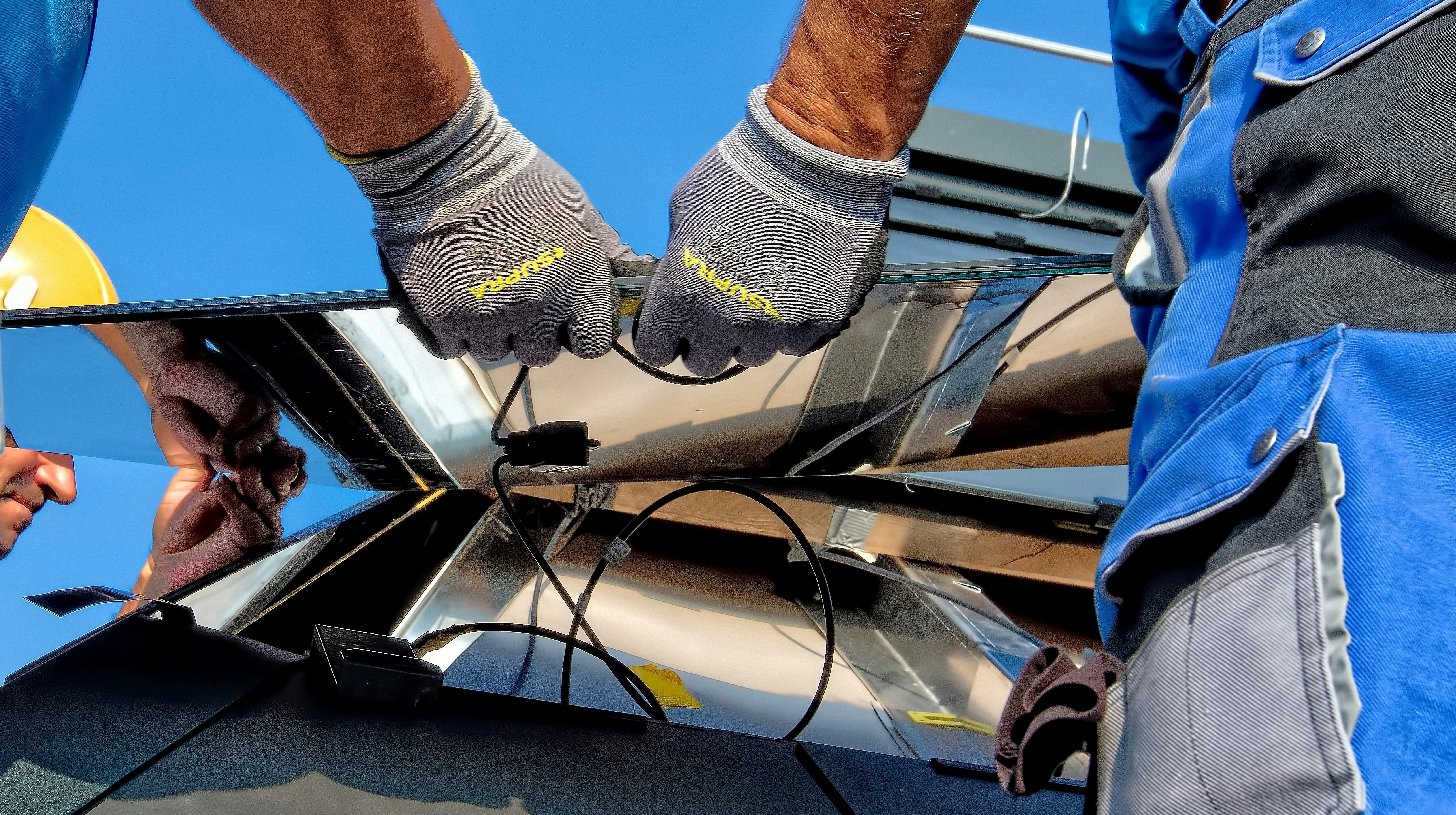On July 4, 2025, President Trump signed the massive budget reconciliation package widely dubbed the One, Big, Beautiful Bill Act (OBBBA). Analysts expect the new law to set off a rush to start construction of more projects by year‑end 2025 and again by early July 2026 as developers jockey to lock in federal clean energy tax credits under the technology‑neutral section 45Y production tax credit (PTC) and section 48E investment tax credit (ITC) frameworks.
The bill also spurred immediate administrative follow‑through: President Trump directed the U.S. Treasury with an executive order to issue “new and revised guidance” within 45 days aimed at tightening how taxpayers demonstrate that projects are “under construction,” cautioning that broad safe harbors may be curtailed unless a “substantial portion” of a facility has actually been built.
Key Timing From OBBBA:
- Start construction by July 4, 2026 and the new placed‑in‑service by end of 2027 deadline for solar & wind is waived; instead, you generally fall back to the familiar multi‑year completion runway under current Treasury guidance (often four years after the year BOC occurs, but longer for certain offshore or federal‑land projects).
- Miss that date? Solar & wind projects must be in service by December 31, 2027 to claim ITC and PTC.
- Projects that begin construction before December 31, 2025 will be exempt from potentially onerous project-level compliance with foreign entity of concern (FEOC) rules, which includes equipment sourcing. Projects would need to have begun construction before December 31, 2024 to be exempt from FEOC entirely. (Read our first take on FEOC restrictions.)
Other technologies, including energy storage, geothermal, biomass, hydro and other non‑solar or wind resources, have until the end of 2033 to start construction for full‑rate tech‑neutral credits, with phase‑down in 2034–35.
Legacy section 45/48 credits remain available, at taxpayer election, for projects that were under construction by December 31, 2024 (and geothermal heat pumps have longer). Projects meeting that legacy BOC are not affected by OBBBA’s changes to tech‑neutral credits.
Why “Beginning of Construction” Matters
BOC will be one of the most important issues facing renewable energy projects in 2025. When you start construction can determine project economics, which tax credit regime applies (legacy §45/§48 vs. tech‑neutral §45Y/§48E), the size of the credit, and compliance with other requirements like prevailing wage, apprenticeship, and domestic content adders — all of which hit project value and bankability.
Developers had a solid playbook to rely on after the passage of the Inflation Reduction Act, but the new law and political cross‑winds have put BOC back under the microscope. As Treasury has been instructed to revisit the “beginning of construction” (BOC) standards, material changes could arrive as soon as mid‑August 2025 (~45 days post‑signature).
Until that guidance is out, treat every safe‑harbor strategy as provisional and build flexibility into contracts so you can pivot. Historically, when Treasury tightens long‑standing rules, changes have tended to apply on a go-forward basis, not retroactively — but it is advisable not to fully bank on that being the case in the upcoming future, as the implications could be dire.
Under existing guidance, most projects that establish BOC by next July have a four‑year window after the year construction starts to finish and still claim credits; certain offshore wind and federal‑land projects have historically had up to 10 years. Keep an eye on how Treasury coordinates these timelines in forthcoming guidance.
Two Paths to Establish “Begin Construction”
Treasury’s legacy framework (still the law of the land, pending new guidance) offers two independent methods; meeting either one starts the clock, though many sponsors pursue both for redundancy (“belts & suspenders”).
Physical Work Test: Qualitative & Fact‑Intensive
The Physical Work Test is satisfied when work of a significant nature begins on components that will become part of the energy property; the emphasis is on the nature of the work, not the dollars spent.
What Doesn’t Count
Planning, design/engineering, securing financing, permitting, studies, and site clearing or excavation that merely changes land contour do not count as BOC. Work on transmission lines, general access roads, perimeter fencing, or buildings that are not ITC‑eligible energy property also does not qualify.
On‑Site Activities That Do Count
Activities tied directly to the energy equipment — e.g., excavation for foundations, setting anchor bolts, pouring concrete pads (turbine foundations; inverter or transformer pads), installing solar module racking/trackers, installing geothermal piping/generators, and constructing on‑site roads integral to operations & maintenance — can establish BOC.
Off‑Site Physical Work Can Also Qualify (With Caution)
Off‑site manufacturing of project‑specific components under a binding written contract may establish construction start, but only if the items are not ordinarily held in inventory. Custom medium‑/high‑voltage transformers are the classic example; specialized racking and, less commonly, bespoke inverters may work in some fact patterns.
Substance Over Spend
IRS guidance provides no quantitative minimum for Physical Work; trying to back into a % number is inherently risky. Focus on whether the work is meaningful in context– $1,000 of qualifying activity on a $200M project will not feel “significant.” Coordinate with tax counsel and financing parties on materiality expectations.
Proving It: Documentation Practices
Because the test is subjective, build a contemporaneous evidence file: obtain proof from the manufacturer (or independent engineer confirmations) to show actual fabrication; request progress invoices; collect dated photos or videos; retain time sheets; and work with tax counsel for a BOC certificate or opinion.
It would not be surprising if we find stricter guidance here or if there is a higher level of scrutiny for projects safe harbored through the Physical Work test. The 5% Safe Harbor is typically more advisable given its objective nature, but for developers that choose to go with the Physical Work test, we strongly encourage gathering documentation to establish a clear fact pattern.
5% Safe Harbor: Quantitative & Widely Used
You begin construction in the year you pay or incur (per your tax accounting method) at least 5% of the total cost of the energy property that will ultimately be credit‑eligible. Many developers favor this route because it is more objective and easier to diligence for investors and lenders.
Define Your “Energy Property” Denominator
Your 5% is measured against the final eligible energy property basis at placed‑in‑service — not your early estimate. Cost overruns, scope creep, and change orders can shrink your percentage and jeopardize the safe harbor. Consider padding spend (6–7%+ when feasible) and model contingencies up front.
It is key to keep in mind that if a step-up is pursued, the total FMV would count as the energy property, increasing the denominator and, hence, the dollar amount of costs incurred required to safe harbor. As such, it may be important to make a decision in advance on your monetization strategy before you tackle your safe harbor strategy.
Cost Quality Hierarchy
Audit‑resilient 5% strategies lean heavily on Tier 1 hard components from unrelated third parties (like modules, inverters, racking, switchgear, batteries, turbine components). Lower‑tier costs (like related‑party hardware or soft costs) draw progressively more investor and IRS scrutiny; rely on them sparingly.
It would not be surprising if guidance and/or audit scrutiny becomes tougher around what costs are eligible for the 5% safe harbor, restricting it to what may be denominated as “Tier 1 hard components” as described above.
Timing Considerations
Under existing rules, costs are generally incurred when you take delivery — a key exception is that a payment made by the deadline can count if delivery is reasonably expected within 3½ months. Accrual‑basis taxpayers cannot count mere deposits; incurrence under a binding contract (and evidence of delivery/title passage) is key.
Don’t Over‑Engineer Contracts — Speed Matters
In year‑end scrambles, over‑negotiating bespoke tax provisions can slow execution and force later, more expensive component buys. Stick close to market terms that suppliers can turn quickly.
Independent AUP / Verification Engagements
Accounting firms frequently perform 5% Safe Harbor Agreed‑Upon Procedures (AUP) engagements: gather POs, supply agreements, payment evidence, bills of lading / title transfer, and run the 5% calculation. These customizable reports support tax equity diligence and audit files.
Trade-offs
You may elect to pursue both the Physical Work Test and the 5% Safe Harbor to build redundancy, especially across multi‑asset portfolios where schedules and budgets move. Many sponsors choose one path per asset; others layer both to mitigate audit risk.
Choose Physical Work when:
- Early cash is tight, but you can mobilize meaningful site or bespoke factory work quickly.
- You have project‑specific long‑lead-time components (e.g., custom transformer).
- Landwork & permitting are done (remember: prelims don’t count).
Choose 5% Safe Harbor when:
- You can swiftly lock in equipment supply and front‑load eligible spend.
- You need objective, auditable evidence for tax equity or tax credit transfers.
- You are aggregating multi‑site portfolios and can bulk‑buy.
Using both for key projects provides redundancy if schedules slip or costs move.
Navigating Challenges Ahead
Our advice to developers would be:
- Map portfolio against OBBBA dates (especially the July 4, 2026 construction‑start milestone) and triage which assets must move.
- Engage tax counsel now to structure Begin Construction approach and documentation.
- Lock supply for Tier‑1 components; draft contracts with 3½‑month delivery/title clauses where relying on 5%.
- Avoid over‑negotiating bespoke terms that delay execution; market inventory will tighten.
- Build conservative cost models (pad ≥6% if possible) to protect the 5% ratio from overruns or FMV step‑ups.
- Commission 5% AUPs (prelim & final) with third parties for investor packages.
The window between now and year‑end 2025 is short, and supply‑chain friction is real. Decide early which BOC path you will use for each asset, paper it carefully, over‑document, and (prudently) over‑spend where needed to protect the 5%. Above all, watch for Treasury’s forthcoming guidance — it could recalibrate the safe harbors and the evidentiary bar.






















